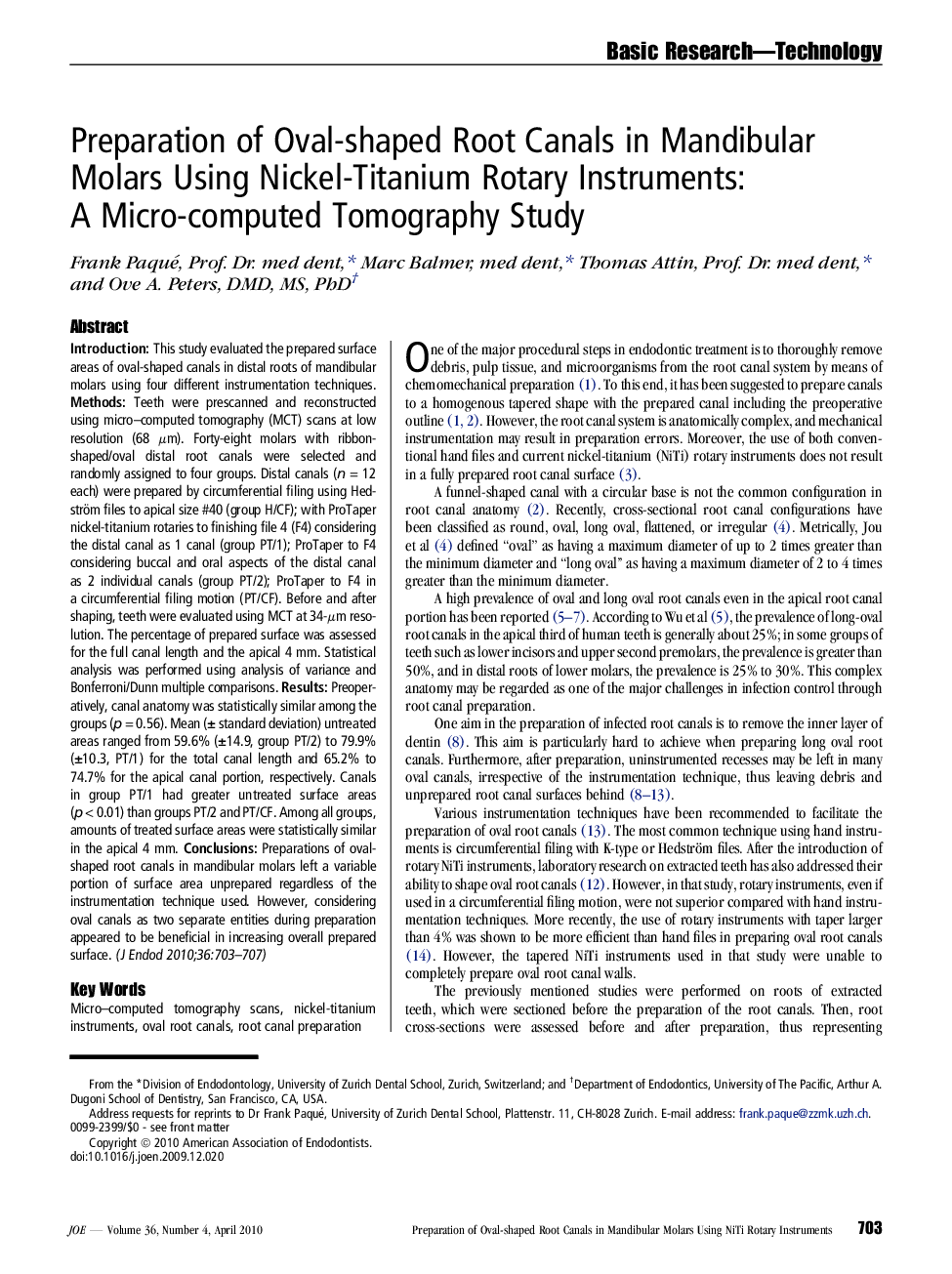| کد مقاله | کد نشریه | سال انتشار | مقاله انگلیسی | نسخه تمام متن |
|---|---|---|---|---|
| 3147975 | 1197383 | 2010 | 5 صفحه PDF | دانلود رایگان |

IntroductionThis study evaluated the prepared surface areas of oval-shaped canals in distal roots of mandibular molars using four different instrumentation techniques.MethodsTeeth were prescanned and reconstructed using micro–computed tomography (MCT) scans at low resolution (68 μm). Forty-eight molars with ribbon-shaped/oval distal root canals were selected and randomly assigned to four groups. Distal canals (n = 12 each) were prepared by circumferential filing using Hedström files to apical size #40 (group H/CF); with ProTaper nickel-titanium rotaries to finishing file 4 (F4) considering the distal canal as 1 canal (group PT/1); ProTaper to F4 considering buccal and oral aspects of the distal canal as 2 individual canals (group PT/2); ProTaper to F4 in a circumferential filing motion (PT/CF). Before and after shaping, teeth were evaluated using MCT at 34-μm resolution. The percentage of prepared surface was assessed for the full canal length and the apical 4 mm. Statistical analysis was performed using analysis of variance and Bonferroni/Dunn multiple comparisons.ResultsPreoperatively, canal anatomy was statistically similar among the groups (p = 0.56). Mean (± standard deviation) untreated areas ranged from 59.6% (±14.9, group PT/2) to 79.9% (±10.3, PT/1) for the total canal length and 65.2% to 74.7% for the apical canal portion, respectively. Canals in group PT/1 had greater untreated surface areas (p < 0.01) than groups PT/2 and PT/CF. Among all groups, amounts of treated surface areas were statistically similar in the apical 4 mm.ConclusionsPreparations of oval-shaped root canals in mandibular molars left a variable portion of surface area unprepared regardless of the instrumentation technique used. However, considering oval canals as two separate entities during preparation appeared to be beneficial in increasing overall prepared surface.
Journal: Journal of Endodontics - Volume 36, Issue 4, April 2010, Pages 703–707